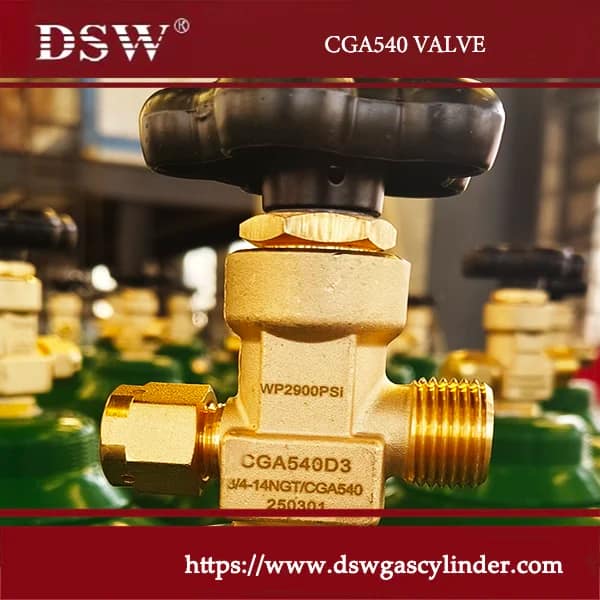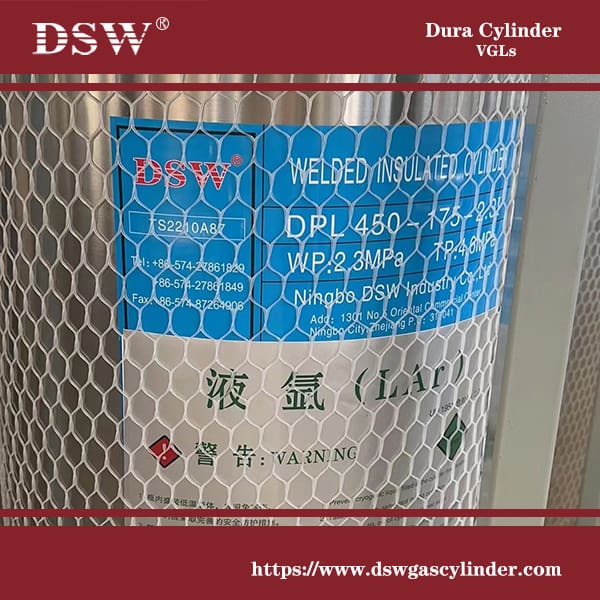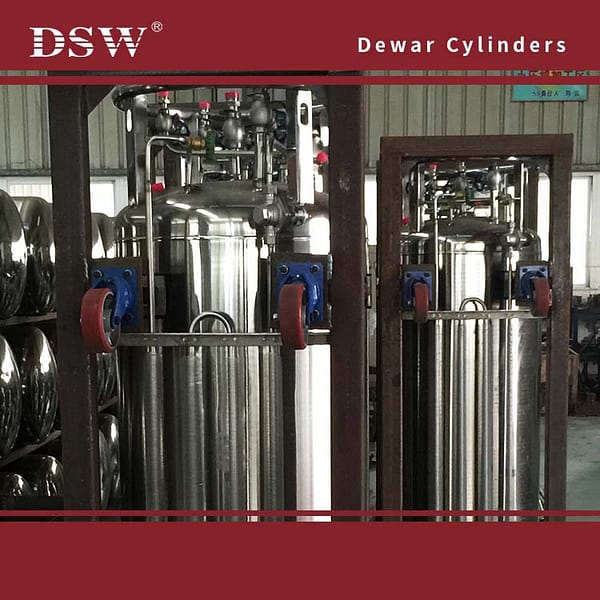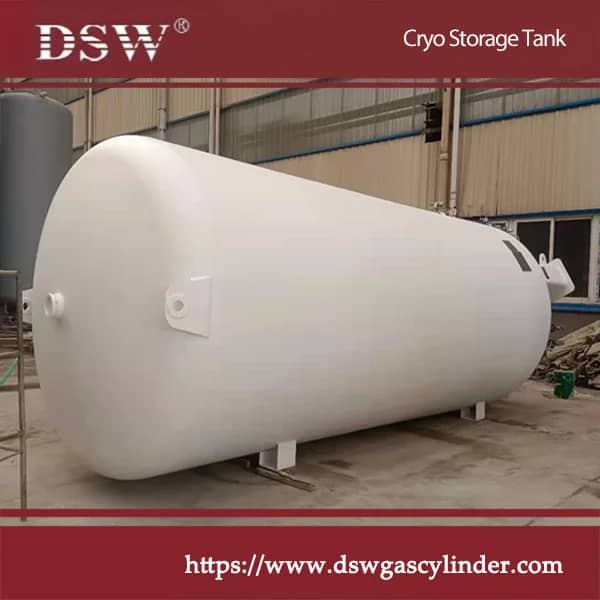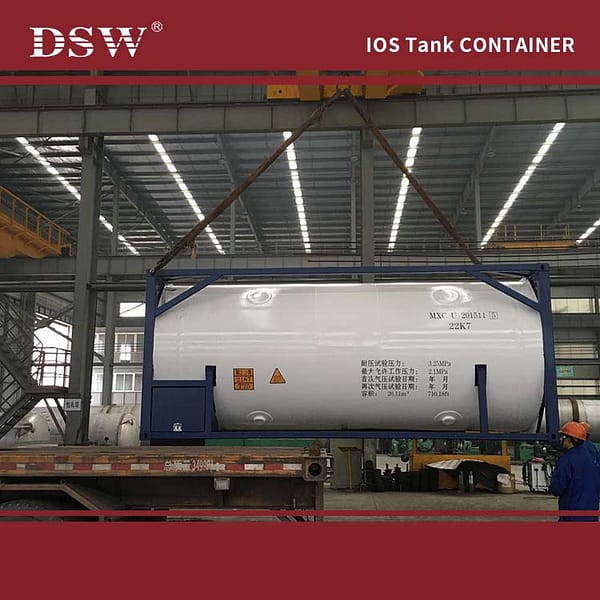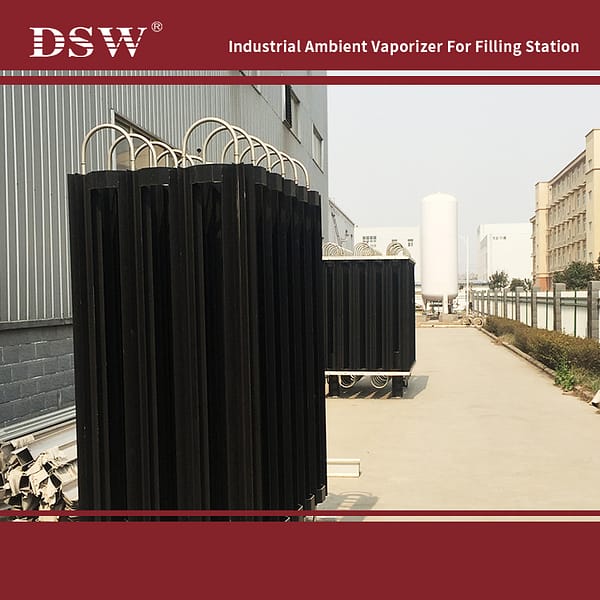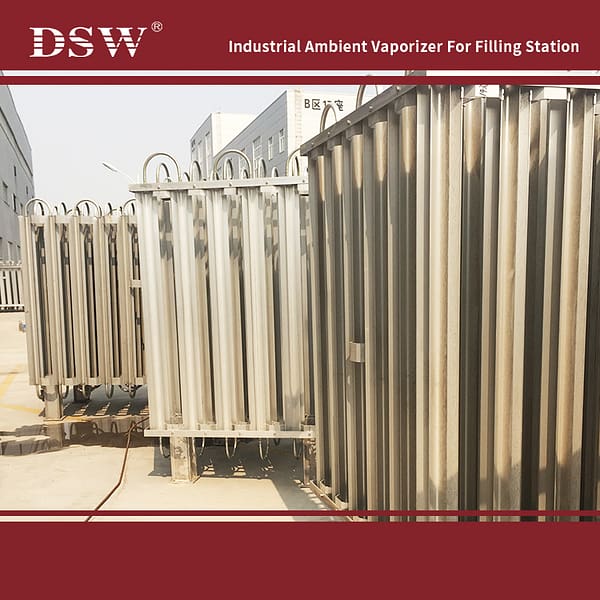A One-Stop Shop for Cryogenic Storage Tanks
Maximize Efficiency and Safety with DSW’s Cryogenic Storage Solutions
DSW is one of the top providers in the cryogenics tanks market, offering our customers standard and custom-made accessories and storage for cryogenics worldwide.
Our wide range of liquid storage tanks – as well as valves and hoses of all sizes, are used to safely store and transport cryogenic gases (LIN, LOX, LHe, LAr and LH2).
Cryogenic storage tanks actively store many substances at extremely low temperatures, usually below -150°C. These tanks can accommodate various materials, including gases like liquid nitrogen and helium and liquids like liquid oxygen, natural gas, and hydrogen.
1. The cryo storage tank includes liquid oxygen, liquid nitrogen, liquid argon, LN2O, LCO2, and LNG tank.
2. Capacity: ranges from 2m3 to 25m3
3. Pressure: Available options include 3Bar, 5Bar, 8Bar, 16Bar, or be customized based on specific user needs.
4. Standards and Regulations: GB, ASME, CE
5. Type: Vertical Storage Tank and Horizontal Storage Tank
6. Insulation methods: super vacuum multi-layer and vacuum perlite powder insulation.
Types of Cryogenic Storage Tanks
DSW offers a variety of cryo storage tanks to suit diverse application needs. Our core product categories include:
Liquid Oxygen Tank: Designed to store and transport LOX at temperatures below -183°C.
Liquid Nitrogen Tank: Ideal for storing and transporting LIN at temperatures below -196°C.
Liquid Argon Tank: Maintain LAR at temperatures below -186°C.
Liquid Carbon Dioxide Tank: Store and transport LCO2 below -78°C.
LNG Tank(Liquefied Natural Gas): Specialized tanks for storing and transporting natural gas in liquid form at temperatures below -162°C.
Capacity and Pressure Options:
Our cryogenic storage tanks come in various capacities ranging from 2m³ to 25m³ to accommodate your specific storage requirements.
We also provide pressure options from 3Bar to 16Bar, with customization available to meet unique needs.
Cryo storage tanks are made of high-grade stainless steel and have vacuum insulation to maintain the low temperature of their contents.
They also have safety features such as pressure relief valves, rupture disks, and level gauges to prevent leaks and ensure safe operation.
Cryogenic liquids are substances with a boiling point below -130degF and are among the most frequently utilized industrial gases stored at cryogenic temperatures for handling, transport, or storage purposes.
Examples include nitrogen, hydrogen, oxygen, helium, and argon.
Regular Mode of Liquid Storage Tank for LOX/LAR/LIN:
| Mode | Volume M3 | Working pressure MPa | evaporate per day %/d | Weight Kg | Size(mm) | ||
| LO2 | LN2 | Lar | |||||
| CFL-2/0.8 | 2 | 0.8 | ≤0.67 | ≤1.0 | ≤0.7 | 2530 | Φ1912×3295 |
| CFL-3/0.8 | 3 | 0.8 | ≤0.6 | ≤0.900 | ≤0.630 | 2972 | Φ1912×3948 |
| CFL-5/0.8 | 5 | 0.8 | ≤0.435 | ≤0.650 | ≤0.460 | 3862 | Φ1912×5196 |
| CFL-5/1.6 | 1.6 | 4813 | Φ1912×5740 | ||||
| CFL-10/0.8 | 10 | 0.8 | ≤0.360 | ≤0.550 | ≤0.380 | 6500 | Φ2216×6600 |
| CFL-10/1.6 | 1.6 | 6500 | Φ2216×6600 | ||||
| CFL-15/0.8 | 15 | 0.8 | ≤0.350 | ≤0.530 | ≤0.370 | 8450 | Φ2316×8166 |
| CFL-15/1.6 | 1.6 | 9020 | Φ2316×8166 | ||||
| CFL-20/0.8 | 20 | 0.8 | ≤0.330 | ≤0.500 | ≤0.350 | 10240 | Φ2216×11558 |
| CFL-20/1.6 | 1.6 | 10240 | Φ2216×11558 | ||||
| CFL-30/0.8 | 30 | 0.8 | ≤0.290 | ≤0.440 | ≤0.310 | 13770 | Φ2616×11128 |
| CFL-30/1.6 | 1.6 | ≤0.290 | ≤0.440 | ≤0.310 | 14812 | Φ2616×11128 | |
| CFL-50/0.8 | 50 | 0.8 | ≤0.23 | ≤0.35 | ≤0.240 | 21299 | Φ3020×12818 |
| CFL-50/1.6 | 1.6 | ≤0.23 | ≤0.35 | ≤0.240 | 23889 | Φ3020×12818 | |
| CFL-100/0.8 | 100 | 0.8 | ≤0.160 | ≤0.250 | ≤0.170 | 41900 | Φ3520×16887 |
Cryo Storage Tank for LNG:
| Mode | Vol M3 | Working pressure MPa | evaporation per day %/d | Weight Kg | Size(mm) |
| CFL-30/0.6 | 30 | 0.6 | ≤0.45 | 14370 | Φ2616×10991 |
| CFL-30/0.8 | 30 | 0.8 | ≤0.45 | 15350 | Φ2616×10991 |
| CFL-50/0.6 | 50 | 0.6 | ≤0.35 | 21760 | Φ3020×12657 |
| CFL-50/0.8 | 50 | 0.8 | ≤0.35 | 23120 | Φ3020×12657 |
| CFL-100/0.6 | 100 | 0.6 | ≤0.25 | 37480 | Φ3520×16887 |
| CFL-100/0.8 | 100 | 0.8 | ≤0.25 | 40330 | Φ3520×16887 |
| CFL-150/0.6 | 150 | 0.6 | ≤0.225 | 52110 | Φ3700×21600 |
| CFL-150/0.8 | 150 | 0.8 | ≤0.225 | 61400 | Φ2416×7450 |
Cryogenic Liquid Storage Tank for LCO2:
| Mode | Vol M3 | Working Pressure MPa | Static Pressure Rise (KPa/d) | Weight Kg | Size (mm) |
|---|---|---|---|---|---|
| CFL-10/2.2 | 10 | 2.2 | ≤35 | 8144 | Φ2116×6900 |
| CFL-15/2.2 | 15 | 2.2 | ≤35 | 11100 | Φ2116×9500 |
| CFL-20/2.2 | 20 | 2.2 | ≤35 | 13350 | Φ2316×9922 |
| CFL-30/2.2 | 30 | 2.2 | ≤20 | 19631 | Φ2820×9600 |
| CFL-50/2.2 | 50 | 2.2 | ≤20 | 30590 | Φ3020×12860 |
| CFL-100/2.2 | 100 | 2.2 | ≤20 | 53995 | Φ3520×17047 |
Applications:
DSW’s cryogenic storage tanks find application in a wide range of industries, including:
- Healthcare: Hospitals and laboratories utilize these tanks for storing cryogenic liquids for medical procedures and research.
- Manufacturing: Employed in various industrial processes like metal fabrication, high-pressure laser cutting, and food freezing.
- Scientific Research: Cryogenic storage tanks support research activities by providing a reliable source of cryogenic liquids.
- Energy Sector: Stores LNG for efficient transportation and distribution.
Material Selection
Cryogenic equipment is made of different materials, including stainless steel, aluminium, and carbon steel. The material used in constructing cryo vessels will determine its durability, thermal conductivity, and cost.
Stainless steel is the most common material used to construct cryo tanks. It’s durable, resistant to corrosion, and has excellent thermal conductivity. However, it’s also the most expensive material.
Global Reach:
DSW is a trusted partner for cryogenic storage solutions worldwide, serving customers in India, Pakistan, Vietnam, Indonesia, Brazil, Russia, Mexico, the United States, Turkey, Germany, and many other countries.
A complete range of bulk Cryogenic Vessels and solutions deliver proven reliability, reduced maintenance, and the lowest cost of ownership for the full spectrum of liquefied gases. Trailers, semi-trailers, swap bodies, liquid tube trailers, and railcars for safe and efficient distribution of non-flammable and flammable liquid gases.



